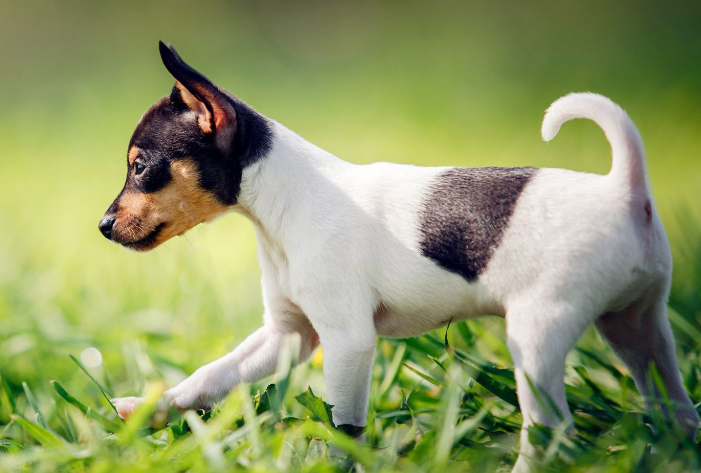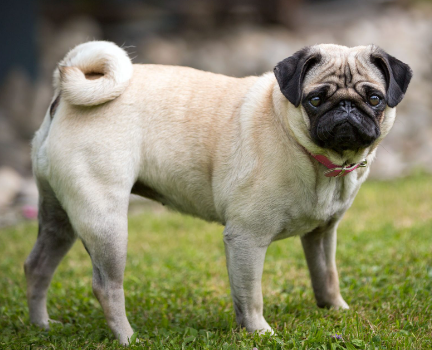The Russian Bear Dog, also known as the Caucasian Mountain Dog, is a formidable guardian breed originating from the Caucasus mountain regions. Known for its imposing size, standing at approximately 26 to 35 inches tall, this breed is primarily employed as a livestock guardian but can also excel as a hunting companion.
Your perception of this breed will largely hinge on your position relative to the leash. With its family, the Russian Bear Dog is a loving and gentle giant. However, when confronted with perceived threats, it transforms into a formidable and protective force to be reckoned with.
- Russian Bear Dog Origin: Caucasus mountain
- Russian Bear Dog Height: 23-30 inches
- Russian Bear Dog Weight: 99-170 pounds
- Russian Bear Dog Size: Large
- Russian Bear Dog Lifespan: 10-12 years
- Russian Bear Dog Colors: Brown, gray, black, cream, white, brindle, fawn, apricot
Caucasian Shepherd Dog (Russian Bear Dog) Breed Characteristics
Caucasian Shepherd dogs are impressively robust, muscular, and well-balanced canines. This giant-sized breed typically weighs between 99 to 170 pounds and stands 23 to 30 inches tall.
Characterized by their sturdy and muscular molosser-type build, these dogs are equipped with a dense, heavy coat that provides excellent protection against the harsh weather conditions of the mountains. They come in various colors, including light brown, tan, slate, cream, and even black.
| Child Friendliness: 3Point | Canine Friendliness: 4Point |
| Training Difficulty: 3Point | Grooming Upkeep: 2Point |
| Breed Health: 4Point | Exercise Needs: 4Point |
| Puppy Costs: 2Point |

History of Caucasian Shepherd
The Caucasian Shepherd is a large breed of dog originating from Russia, Armenia, Azerbaijan, and Georgia, where it is particularly popular, notably in Georgia. Also referred to as the Caucasian Mountain Dog or Caucasian Ovcharka, it has ancient roots and has been recognized since ancient times.
The breed made its official debut outside the Caucasus region in the 1930s in Germany. It has been documented in the Foundation Stock Service since 1996, showcasing its longstanding presence.
The show dogs, commonly known as Caucasian Ovcharka, were developed by the USSR during the 20th century. This breed is fully standardized and recognized by major kennel associations worldwide, including the AKC, FCI, and UKC.
The introduction of the Caucasian Ovcharka to the United States occurred in 1990 when Stacey and Russell Kubyn imported the first dogs into Ohio, subsequently establishing the Caucasian Ovcharka Club of America. The breed was officially recognized by the United Kennel Club in 1995 and entered the American Kennel Club Foundation Stock Service in 1996. Since 2008, these dogs have been eligible to participate in events such as obedience and rally competitions.
Appearance
It’s no secret that Russian Bear Dogs are massive canines! Typically weighing between 100 to 170 lbs and standing 23 to 30 inches tall, males are generally larger than females, often sporting a significantly larger head. Interestingly, they bear a resemblance to teddy bears, hence their name!
Some Russian Bear Dogs have cropped ears, a practice that has been historically and still is commonly done among many livestock guardian breeds. This practice aims to reduce the opportunity for parasites to latch onto the dog’s ears.
Temperament
The original role of the Caucasian Shepherd was to guard livestock. Typically characterized as assertive, self-aware, and courageous, this intelligent breed possesses an independent nature, requiring patient, firm, and consistent training.
However, the Caucasian Shepherd isn’t suited for every owner. It demands a proprietor who can demonstrate strong leadership and is committed to investing significant time in socialization and training.
Due to its protective instincts, this breed should not be left unsupervised with children. In instances where play becomes overly rough, the Caucasian Shepherd may feel compelled to intervene and protect the child, potentially resulting in injury.
Russian Bear Dog Personality
The Russian Bear Dog, also known as the Caucasian Shepherd Dog, is a guardian breed known for its serious and protective nature. Characterized by strength, loyalty, and courage, this breed is fiercely devoted to its family but may display aggression towards strangers, including children who visit and play.
Due to its protective instincts and strong-willed disposition, the Caucasian Shepherd Dog is not recommended for first-time owners.
Health
Although all dogs may encounter health issues, some breeds are predisposed to specific ailments. The Russian Bear Dog, bred with a focus on health among other traits, generally enjoys good overall health compared to breeds plagued by various health issues.
However, there are two particular health concerns that Caucasian Mountain Dogs may encounter.
Hipsterism Dysplasia
As mentioned earlier, hip dysplasia is a common concern among large-breed dogs due to their rapid growth to significant sizes. Despite receiving optimal nutrition from an early age, hip dysplasia remains hereditary and can pose challenges for dogs as they mature.
This condition arises when the ball joint of the dog’s hip is not properly seated in the socket, resulting in limping and difficulty moving. Hip dysplasia is a painful condition with limited treatment options.
Similarly, Russian Bear Dogs are prone to elbow dysplasia, a condition affecting the front legs at the elbow joint. Like hip dysplasia, elbow dysplasia causes discomfort and mobility issues, leading to limping and difficulty moving around.
Cataracts
Another prevalent issue encountered by the Caucasian Ovcharka is cataracts, a condition where the lens of the dog’s eye becomes cloudy. While some dogs may develop small cataracts that minimally impact their vision, others may suffer from complete blindness due to this condition.
Although there are preventive measures you can take to reduce the risk of your Russian Bear Dog developing cataracts, once the condition manifests, surgery is typically the only option available.
Dental Health check-up
Maintaining proper dental hygiene is crucial for every dog, including the Caucasian Shepherd. Aim to brush your pet’s teeth at least 2 or 3 times per week using specialized toothpaste and a toothbrush designed for dogs. Your veterinarian can guide the correct technique.
Failure to attend to your pet’s dental health may result in the buildup of tartar, which can lead to oral issues and tooth loss. Additionally, poor dental health can have ramifications for other bodily systems. Regular dental care is essential for promoting overall health and well-being in your Caucasian Shepherd.

Russian Bear Dog Puppy (Caucasian Mountain)Care
Caucasian Mountain Dogs are undeniably a unique breed, and as such, they require specific care tailored to their needs. When caring for a Caucasian Ovcharka Dog, it’s essential to consider factors such as their dietary needs, exercise requirements, training regimen, and temperament. Taking these aspects into account will ensure that you provide the best possible care for your new canine companion.
Best food for
- Taste of the Wild Dry Dog Food
- PEDIGREE Complete Nutrition Adult Dry Dog Food Bonus Bags
- Natural Balance L.I.D. Limited Ingredient Diets Dry Dog Food – Sweet Potato & Fish Formula
- EUKANUBA Adult Dry Dog Food
Feed Healthy food
Providing a nutritious diet is paramount for your dog’s well-being. Nowadays, there is a wide array of healthy food options available, allowing you to select the best choice for your canine companion.
Nutritious food plays a vital role in canine healthcare. The young Russian Bear Dog may not have a robust appetite compared to other breeds of similar size. It may be necessary to entice him with meat toppings or bacon grease mixed into his meals to stimulate his appetite.
Typically, this breed will consume between 6 to 14 cups of high-quality dry dog food per day, divided into at least two servings, preferably three, to prevent issues such as bloat.
Feeding Plan
The Caucasian Shepherd Dog is an ancient and resilient breed known for its robust nature. Typically, these dogs have hearty appetites and are not picky eaters. Maintaining a proper diet is crucial to ensure the health and vitality of your Caucasian Mountain Dog.
A balanced diet for an adult Caucasian Shepherd Dog should consist of adequate proportions of proteins, fats, carbohydrates, vitamins, minerals, and trace elements.
Ideally, the diet should include raw beef, cooked poultry, raw fish, and both raw and cooked vegetables. Grated raw carrots with a dash of sunflower oil can be particularly beneficial. It’s advisable to avoid feeding milk, especially to adult dogs, and instead opt for yogurt or other dairy alternatives.
Grooming
The Russian Bear Dog’s dense coat requires regular grooming to keep it in top condition. Brushing should be done at least twice a week, or even daily during shedding season, using a slicker brush to gently remove any tangles and mats, following the direction of the fur growth.
Bathing your dog every four to six weeks is recommended, or as needed if the coat appears dirty or starts to develop an unpleasant odor.
Training
PuppyDog Training
Training Caucasian Shepherd Dogs requires a specific and meticulous approach. By the age of 0 to 9 months, the foundation of the dog’s obedience should already be established. Puppy obedience classes are generally not recommended for Caucasian Shepherd Dogs, as they may struggle to tolerate other dogs and can easily become unruly.
Caucasian Shepherd Dogs have a strong and potentially dangerous temperament. While they may exhibit stubbornness and reluctance to learn, owners must maintain control at all times during training. Consistency and firm leadership are essential for managing this breed effectively.
jalopy training
Crate training is a valuable tool for dog owners, particularly those with young children. It’s essential for various situations such as vet visits, travel, and boarding. When done correctly, crate training can be a straightforward process that provides lifelong benefits for your dog.
Many owners often wonder how long a puppy should be crated. Refer to the table below to determine appropriate crate durations based on your dog’s age.
Behavioral training
Before teaching basic commands, it’s crucial to develop a strong emotional bond between the dog and the owner. Behavioral training is essential for every dog owner, as it helps address common behavioral issues such as chewing, aggression, and disobedience. By addressing these issues, behavioral training contributes significantly to the overall well-being of the dog.
To effectively train your puppy in behavioral training, it’s important to identify and understand common behavioral issues such as chewing and aggression. By addressing these issues promptly and consistently, you can train your dog effectively.
Obedience training
Obedience training typically encompasses a dog’s training regimen and is commonly associated with teaching fundamental commands such as “sit,” “down,” “come,” and “stay.” It ranges from basic obedience training to advanced competition-level training.
The duration and complexity of obedience training can vary depending on factors such as the dog’s temperament, the training methods employed, and the proficiency of both the trainer and the dog owner. It may require ongoing and extensive effort to achieve desired results.
Exercise
Russian Bear Dogs require a minimum of one hour of daily exercise, ideally divided into at least two separate walks. Due to their need for ample space to roam and stretch their legs, they are not well-suited for apartment living.
To prevent skeletal development issues in this breed, it’s important to provide adequate exercise from a young age. A general rule is to exercise a puppy for five minutes per month of age. For example, a five-month-old puppy should engage in exercise sessions lasting around 25 minutes.
Effects to consider espousing a Caucasian Cowgirl
However, it’s essential to consider whether adopting a Caucasian Shepherd Dog is the right decision for you.
- Before bringing a Caucasian Shepherd Dog into your home, assess how much time your new family member will spend alone. Remember, puppies require constant attention and care.
- Reflect on whether you can commit to walking your dog multiple times throughout the day.
- It’s also beneficial to understand your dog’s ability to hold their bladder for extended periods.
- Seek advice from individuals who have adopted adult dogs and consider adopting an adult dog yourself.
- If you’re uncertain whether the chosen dog is suitable for your family and lifestyle, consider fostering before making a long-term commitment.
Russian Bear Dog Adoption Center
Caucasian Shepherd for Sale or Adoption
Other Dog Breeds and Further Research
FAQs
Russian Bear PuppyDog Price
The cost of purchasing a Russian Bear Dog can vary significantly, depending on various factors such as the breeder’s location, reputation, the size of the dog, lineage, breed popularity, training, socialization efforts, pedigree, and more. Below, you’ll find an overview of the typical price range for Russian Bear Dog puppies.
The price of a Russian Bear Dog largely depends on the breeder, with listings ranging from $500 to $2000.
Are Russian Bear Dogs Allowed in the US?
Russian Bear Dogs, also known as Caucasian Shepherd Dogs, were originally bred for guarding flocks in the Caucasus Mountains. While they are occasionally used for bear hunting, they are not prohibited in the United States.
How Much Does a Russian Bear Dog Cost?
You may find Russian Bear Dogs available for as low as $500 if you’re seeking a dependable guard dog. However, for show quality or breeding purposes, expect to pay around $4,000. On average, a well-bred Caucasian Mountain Dog puppy typically sells for around $2,000.
What is a Russian Bear Dog?
The Russian Bear Dog, also known as the Caucasian Shepherd Dog, originates from the Caucasus mountain region in Southern Russia. They are renowned for their size and strength, often referred to as Caucasian Mountain Dogs or Caucasian Ovcharkas, which means “beast guardian” in Russian.
Why is it Called Russian Bear Dog?
Russian Bear Dogs earned their nickname not only for their ability to confront bears but also due to their imposing size, which rivals that of a bear. Males typically stand between 23 to 30 inches at the shoulder, significantly larger than females.












2 thoughts on “Russian Bear Dog || Caucasian Shepherd- Full Information”